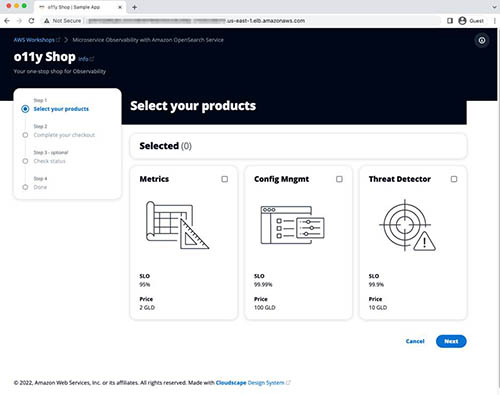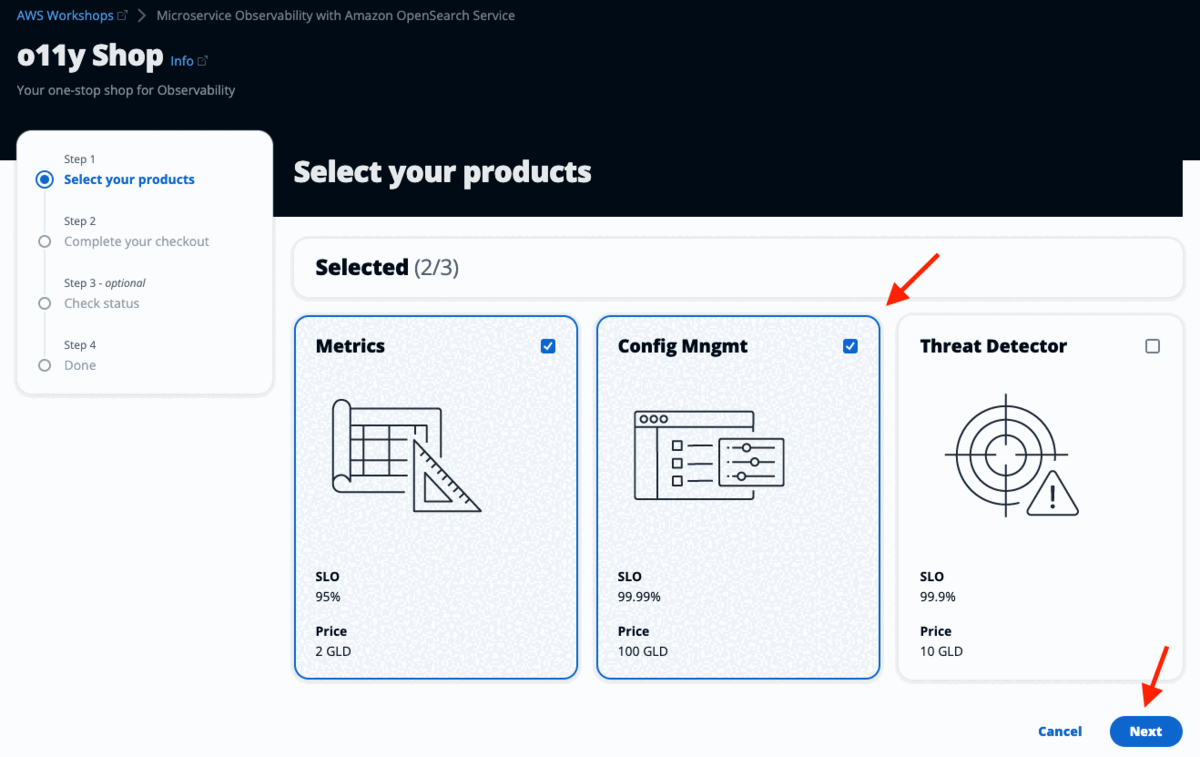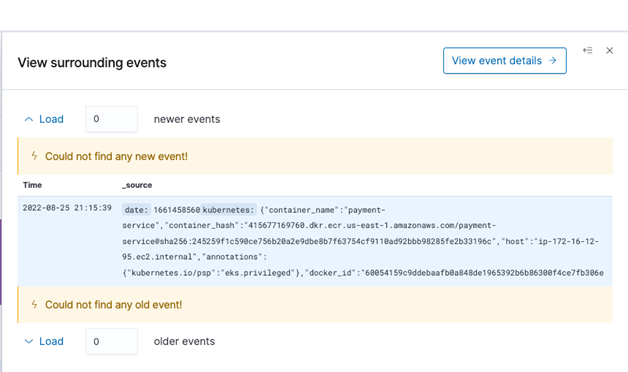[ad_1]
Trendy enterprises are more and more adopting microservice architectures and transferring away from monolithic constructions. Though microservices present agility in growth and scalability, and encourage use of polyglot techniques, additionally they add complexity. Troubleshooting distributed companies is tough as a result of the applying behavioral information is distributed throughout a number of machines. Subsequently, to be able to have deep insights to troubleshoot distributed functions, operational groups want to gather utility behavioral information in a single place to scan by way of them.
Though organising monitoring techniques focuses on analyzing solely log information will help you perceive what went incorrect and notify about any anomalies, it fails to offer perception into why one thing went incorrect and precisely the place within the utility code it went incorrect. Fixing points in a fancy community of techniques is like discovering a needle in a haystack. Observability based mostly on Open Requirements outlined by OpenTelemetry addresses the issue by offering assist to deal with logs, traces, and metrics inside a single implementation.
On this sequence, we cowl the setup and troubleshooting of a distributed microservice utility utilizing logs and traces. Logs are immutable, timestamped, discreet occasions taking place over a time period, whereas traces are a sequence of associated occasions that seize the end-to-end request circulate in a distributed system. We glance into tips on how to accumulate a big quantity of logs and traces in Amazon OpenSearch Service and correlate these logs and traces to seek out the precise challenge and the place the difficulty was generated.
Any investigation of points in enterprise functions must be logged in an incident report, in order that operational and growth groups can collaborate to roll out a repair. When any investigation is carried out, it’s essential to put in writing a story in regards to the challenge in order that it may be utilized in dialogue later. We glance into tips on how to use the newest pocket book function in OpenSearch Service to create the incident report.
On this put up, we focus on the structure and utility troubleshooting steps.
Answer overview
The next diagram illustrates the observability resolution structure to seize logs and traces.
The answer elements are as follows:
- Amazon OpenSearch Service is a managed AWS service that makes it straightforward to deploy, function, and scale OpenSearch clusters within the AWS Cloud. OpenSearch Service helps OpenSearch and legacy Elasticsearch open-source software program (as much as 7.10, the ultimate open-source model of the software program).
- FluentBit is an open-source processor and forwarder that collects, enriches, and sends metrics and logs to numerous locations.
- AWS Distro for OpenTelemetry is a safe, production-ready, AWS-supported distribution of the OpenTelemetry venture. With AWS Distro for OpenTelemetry, you may instrument your functions simply as soon as to ship correlated metrics and traces to a number of AWS and Accomplice monitoring options, together with OpenSearch Service.
- Information Prepper is an open-source utility service with the flexibility to filter, enrich, remodel, normalize, and mixture information to allow an end-to-end evaluation lifecycle, from gathering uncooked logs to facilitating refined and actionable interactive advert hoc analyses on the info.
- We use a pattern observability store internet utility constructed as a microservice to exhibit the capabilities of the answer elements.
- Amazon Elastic Kubernetes Service (Amazon EKS) is a managed service that you should use to run Kubernetes on AWS with no need to put in, function, and preserve your personal Kubernetes management airplane or nodes. Kubernetes is an open-source system for automating the deployment, scaling, and administration of the container.
On this resolution, we now have a pattern o11y (Observability) Store internet utility written in Python and Java, and deployed in an EKS cluster. The net utility consists of varied companies. When some operations are achieved from the entrance finish, the request travels by way of a number of companies on the backend. The applying companies are working as separate containers, whereas AWS Distro for OpenTelemetry, FluentBit, and Information Prepper are working as sidecar containers.
FluentBit is used for gathering log information from utility containers, after which sends logs to Information Prepper. For gathering traces, first the applying companies are instrumented utilizing the OpenTelemetry SDK. Then, with AWS Distro for OpenTelemetry collector, hint info is collected and despatched to Information Prepper. Information Prepper forwards the logs and traces information to OpenSearch Service.
We suggest deploying the OpenSearch Service area inside a VPC, so a reverse proxy is required to have the ability to log in to OpenSearch Dashboards.
Prerequisite
You want an AWS account with vital permissions to deploy the answer.
Arrange the setting
We use AWS CloudFormation to provision the elements of our structure. Full the next steps:
- Launch the CloudFormation stack within the
us-east-1Area:
- It’s possible you’ll hold the stack identify default to
AOS-Observability. - It’s possible you’ll change the
OpenSearchMasterUserNameparameter used for OpenSearch Service login whereas maintaining different parameter values to default. The stack provisions a VPC, subnets, safety teams, route tables, an AWS Cloud9 occasion, and an OpenSearch Service area, together with a Nginx reverse proxy. It additionally configures AWS Id and Entry Administration (IAM) roles. The stack will even generate a brand new random password for OpenSearch Service area which might be seen within the CloudFormation Outputs tab underneathAOSDomainPassword. - On the stack’s Outputs tab, select the hyperlink for the AWS Cloud9 IDE.

- Run the next code to put in the required packages, configure the setting variables and provision the EKS cluster:
After the sources are deployed, it prints the hostname for the o11y Store internet utility.

- Copy the hostname and enter it within the browser.
This opens the o11y Store microservice utility, as proven within the following screenshot.
Entry the OpenSearch Dashboards
To entry the OpenSearch Dashboards, full the next steps:
- Select the hyperlink for
AOSDashboardsPublicIPfrom the CloudFormation stack outputs. As a result of the OpenSearch Service area is deployed contained in the VPC, we use an Nginx reverse proxy to ahead the visitors to the OpenSearch Service area. As a result of the OpenSearch Dashboards URL is signed utilizing a self-signed certificates, it’s essential bypass the safety exception. In manufacturing, a legitimate certificates is really useful for safe entry.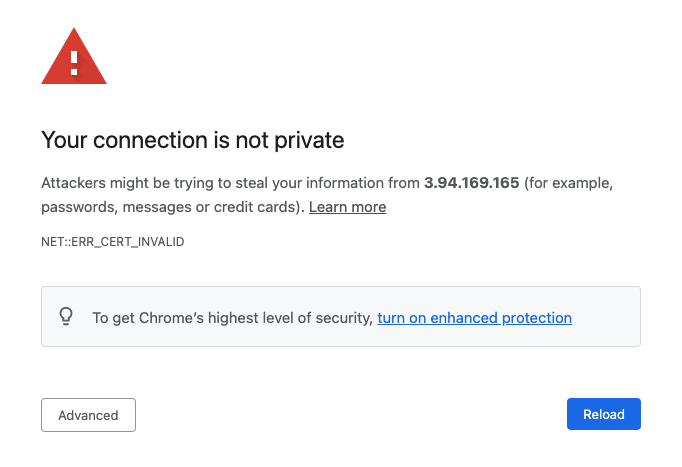
- Assuming you’re utilizing Google Chrome, if you are on this web page, enter
thisisunsafe.Google Chrome redirects you to the OpenSearch Service login web page. - Log in with the OpenSearch Service login particulars (discovered within the CloudFormation stack output:
AOSDomainUserNameandAOSDomainPassword).You’re introduced with a dialog requesting you so as to add information for exploration. - Choose Discover by myself.
- When requested to pick out a tenant, go away the default choices and select Affirm.
- Open the Hamburger menu to discover the plugins inside OpenSearch Dashboards.

That is the OpenSearch Dashboards consumer interface. We use it within the subsequent steps to research, discover, repair, and discover the foundation reason for the difficulty.
Logs and traces technology
Click on across the o11y Store utility to simulate consumer actions. This may generate logs and a few traces for the related microservices saved in OpenSearch Service. You are able to do the method a number of instances to generate extra pattern logs and traces information.
Create an index sample
An index sample selects the info to make use of and permits you to outline properties of the fields. An index sample can level to a number of indexes, information streams, or index aliases.
You should create an index sample to question the info by way of OpenSearch Dashboards.
- On OpenSearch Dashboards, select Stack Administration.
- Select Index Patterns
- Select Create index sample.
- For Index sample identify, enter
sample_app_logs. OpenSearch Dashboards additionally helps wildcards. - Select Subsequent step.

- For Time discipline, select time.
- Select Create index sample.

- Repeat these steps to create the index sample
otel-v1-apm-span*withoccasion.timebecause the time discipline for locating traces.
Search logs
Select the menu icon and search for the Uncover part in OpenSearch Dashboards. The Uncover panel permits you to view and question logs. Verify the log exercise taking place within the microservice utility.
If you happen to can’t see any information, enhance the time vary to one thing giant (just like the final hour). Alternatively, you may play across the o11y Store utility to generate current logs and traces information.
Instrument functions to generate traces
Functions must be instrumented to generate and ship hint information downstream. There are two varieties of instrumentation:
- Computerized – In automated instrumentation, no utility code change is required. It makes use of an agent that may seize hint information from the working utility. It requires utilization of the language-specific API and SDK, which takes the configuration offered by way of the code or setting and offers good protection of endpoints and operations. It mechanically determines the span begin and finish.
- Handbook – In guide instrumentation, builders want so as to add hint seize code to the applying. This offers customization by way of capturing traces for a customized code block, naming numerous elements in
OpenTelemetrylike traces and spans, including attributes and occasions, and dealing with particular exceptions throughout the code.
In our utility code, we use guide instrumentation. Discuss with Handbook Instrumentation to gather traces within the GitHub repository to grasp the steps.
Discover hint analytics
OpenSearch Service model 1.3 has a brand new module to assist observability.
- Select the menu icon and search for the Observability part underneath OpenSearch Plugins.

- Select Hint analytics to look at among the traces generated by the backend service. If you happen to fail to notice ample information, enhance the time vary. Alternatively, select all of the buttons on the pattern app webpage for every utility service to generate ample hint information to debug. You may select every possibility a number of instances. The next screenshot exhibits a summarized view of the traces captured.
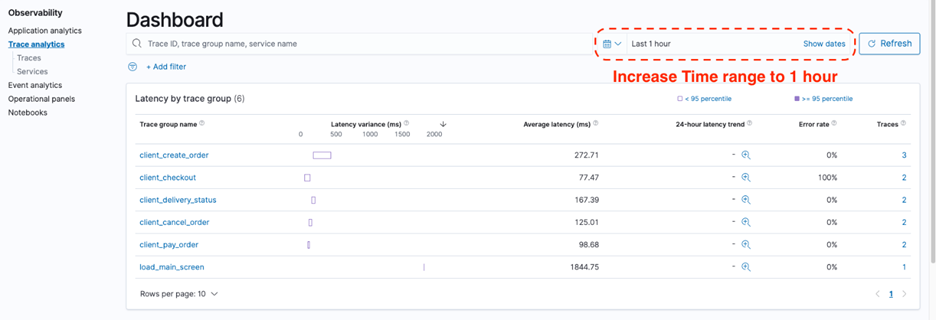
The dashboard view teams traces collectively by hint group identify and offers details about common latency, error price, and developments related to a selected operation. Latency variance signifies if the latency of a request falls beneath the 95 percentile or above. If there are a number of hint teams, you may cut back the view by including filters on numerous parameters. - Add a filter on the hint group
client_checkout.
The next screenshot exhibits our filtered outcomes.
The dashboard additionally incorporates a map of all of the related companies. The Service map helps present a high-level view on what’s occurring within the companies based mostly on the color-coding grouped by Latency, Error price, and Throughput. This helps you establish issues by service. - Select Error price to discover the error price of the related companies.Primarily based on the color-coding within the following diagram, it’s evident that the cost service is throwing errors, whereas different companies are working wonderful with none errors.

- Change to the Latency view, which exhibits the relative latency in milliseconds with totally different colours.
That is helpful for troubleshooting bottlenecks in microservices.
The Hint analytics dashboard additionally exhibits distribution of traces over time and hint error price over time.
- To find the record of traces, underneath Hint analytics within the navigation pane, select Traces.

- To seek out the record of companies, rely of traces per service, and different service-level statistics, select Providers within the navigation pane.

Search traces
Now we wish to drill down and study extra about tips on how to troubleshoot errors.
- Return to the Hint analytics dashboard.
- Select Error Price Service Map and select the
costservice on the graph.Thecostservice is in darkish purple. This additionally units thecostservice filter on the dashboard, and you’ll see the hint group within the higher pane. - Select the Traces hyperlink of the
client_checkouthint group.
You’re redirected to the Traces web page. The record of traces for theclient_checkouthint group might be discovered right here.
- To view particulars of the traces, select Hint IDs.You may see a pie chart exhibiting how a lot time the hint has spent in every service. The hint consists of a number of spans, which is outlined as a timed operation that represents a chunk of workflow within the distributed system. On the precise, you can even see time spent in every span, and which have an error.
- Copy the hint ID within the
client-checkoutgroup.
Log and hint correlation
Though the log and hint information offers beneficial info individually, the precise benefit is once we can relate hint information to log information to seize extra particulars about what went incorrect. There are 3 ways we will correlate traces to logs:
- Runtime – Logs, traces, and metrics can report the second of time or the vary of time the run befell.
- Run context – That is often known as the request context. It’s customary follow to report the run context (hint and span IDs in addition to user-defined context) within the spans.
OpenTelemetryextends this follow to logs the place attainable by together with theTraceIDandSpanIDwithin the log data. This enables us to instantly correlate logs and traces that correspond to the identical run context. It additionally permits us to correlate logs from totally different elements of a distributed system that participated within the explicit request. - Origin of the telemetry – That is often known as the useful resource context.
OpenTelemetrytraces and metrics include details about the useful resource they arrive from. We prolong this follow to logs by together with the useful resource within the log data.
These three correlation strategies might be the inspiration of highly effective navigational, filtering, querying, and analytical capabilities. OpenTelemetry goals to report and accumulate logs in a way that allows such correlations.
- Use the copied
traceIdfrom the earlier part and seek for corresponding logs on the Occasion analytics web page.
We use the next PPL question:Make sure that to extend the time vary to a minimum of the final hour.

- Select Replace to seek out the corresponding log information for the hint ID.

- Select the broaden icon to seek out extra particulars.This exhibits you the small print of the log together with the
traceId. This log exhibits that the cost checkout operation failed. This correlation allowed us to seek out key info within the log that permits us to go to the applying and debug the code.
- Select the Traces tab to see the corresponding hint information linked with the log information.

- Select View surrounding occasions to find different occasions taking place on the similar time.
This info might be beneficial whenever you wish to perceive what’s occurring in the entire utility, notably how different companies are impacted throughout that point.
Cleanup
This part offers the required info for deleting numerous sources created as a part of this put up.
It is suggested to carry out the beneath steps after going by way of the subsequent put up of the sequence.
- Execute the next command on the Cloud9 terminal to take away Elastic Kubernetes Service Cluster and its sources.
- Execute the script to delete the Amazon Elastic Container Registry repositories.
- Delete the CloudFormation stacks in sequence
- eksDeploy,AOS-Observability.
Abstract
On this put up, we deployed an Observability (o11y) Store microservice utility with numerous companies and captured logs and traces from the applying. We used FluentBit to seize logs, AWS Distro for Open Telemetry to seize traces, and Information Prepper to gather these logs and traces and ship it to OpenSearch Service. We confirmed tips on how to use the Hint analytics web page to look into the captured traces, particulars about these traces, and repair maps to seek out potential points. To correlate log and hint information, we demonstrated tips on how to use the Occasion analytics web page to put in writing a easy PPL question to seek out corresponding log information. The implementation code might be discovered within the GitHub repository for reference.
The subsequent put up in our sequence covers the usage of PPL to create an operational panel to watch our microservices together with an incident report utilizing notebooks.
Concerning the Creator
 Subham Rakshit is a Streaming Specialist Options Architect for Analytics at AWS based mostly within the UK. He works with prospects to design and construct search and streaming information platforms that assist them obtain their enterprise goal. Exterior of labor, he enjoys spending time fixing jigsaw puzzles together with his daughter.
Subham Rakshit is a Streaming Specialist Options Architect for Analytics at AWS based mostly within the UK. He works with prospects to design and construct search and streaming information platforms that assist them obtain their enterprise goal. Exterior of labor, he enjoys spending time fixing jigsaw puzzles together with his daughter.
 Marvin Gersho is a Senior Options Architect at AWS based mostly in New York Metropolis. He works with a variety of startup prospects. He beforehand labored for a few years in engineering management and hands-on utility growth, and now focuses on serving to prospects architect safe and scalable workloads on AWS with a minimal of operational overhead. In his free time, Marvin enjoys biking and technique board video games.
Marvin Gersho is a Senior Options Architect at AWS based mostly in New York Metropolis. He works with a variety of startup prospects. He beforehand labored for a few years in engineering management and hands-on utility growth, and now focuses on serving to prospects architect safe and scalable workloads on AWS with a minimal of operational overhead. In his free time, Marvin enjoys biking and technique board video games.
 Rafael Gumiero is a Senior Analytics Specialist Options Architect at AWS. An open-source and distributed techniques fanatic, he offers steerage to prospects who develop their options with AWS Analytics companies, serving to them optimize the worth of their options.
Rafael Gumiero is a Senior Analytics Specialist Options Architect at AWS. An open-source and distributed techniques fanatic, he offers steerage to prospects who develop their options with AWS Analytics companies, serving to them optimize the worth of their options.
[ad_2]



